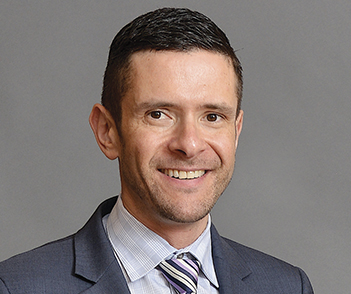EVIDENCE BASED INSIGHT
The Aspirational Role of Artificial Intelligence and Advanced Analytics
September 21, 2020 • 6 min read
LEN USVYAT, PhD • SHEETAL CHAUDHURI, MS
Fresenius Medical Care is committed to exploring and implementing a full range of advanced analytic solutions that support clinical decisions. To ensure that every new AI model will add real value to patient care, the review process includes a clinical pilot phase and an operational evaluation. This rigorous requirement is a distinguishing characteristic of the Fresenius Medical Care approach. As the company leverages its global expertise and vast data to accelerate AI solutions for nephrology, it’s critical for researchers, data scientists, and practitioners to collaborate and prioritize tools that can be meaningfully integrated into a clinician’s workflow.
Artificial intelligence (AI) is transforming healthcare through advancements in clinical decision support. AI is an umbrella term that brings together concepts from several fields such as computer science, statistics, algorithmics, machine learning (ML), information retrieval, and data science at large. Machine learning is growing rapidly due to advancements in computational power and improvements in statistical techniques. Deep learning is a subfield of ML that mimics artificial neural networks to learn. These advancements ultimately enable AI to be leveraged to identify hidden interactions and patterns within large, complex, multilevel datasets (Figure 1).
FIGURE 1 | Relationship of artificial intelligence, machine learning, and deep learning
AI—specifically machine learning—can be defined as solving problems by building algorithms that are based on learning from a data set of examples utilizing stochastic probability-based modeling.1 Implementation of AI in healthcare generally consists of a series of stages as shown in Figure 2.
FIGURE 2 | Application of AI in healthcare and kidney disease
In the problem definition stage, the clinical problem is defined and transformed into a relevant machine learning problem. For example, Fresenius Medical Care has a predictive model to identify which patients are more likely to be admitted to the hospital in the next week. In the data preparation stage, large volumes of retrospective data are collected, integrated, cleaned, and then engineered into variables (“features”) for the model. In the hospital admission predictive model, clinical data (e.g., hospitalization history, treatment vitals, laboratory measurements, nurses’ notes) from over 100,000 patients is used to separate those who have been historically admitted or not admitted. In the model building stage, predictive models are trained and performance is analyzed. Once the model performance is acceptable and solves the business problem, the model can then be deployed, used, and monitored in production, the last stage. In the next section, we will review some of the models that have been trained in healthcare.
In nephrology, while the application of AI is relatively limited, the potential is significant. A few nephrology-specific examples include predicting acute kidney injury, chronic kidney disease progression, and morbid events in dialysis patients.2,3,4 However, AI is ripe for nephrology due to the presence of large data sets and prevalence of disease. Clinical data of many patients treated with dialysis is stored in electronic medical records, making it ideally suitable for AI applications. Clinical data for dialysis patients is unique (as compared to those in the hospital setting) because most of the patients visit dialysis clinics three times a week for three to four hours at a time. There are enormous amounts of clinical data—such as vitals, laboratory measurements, and comprehensive assessments—collected at each visit. Given this rich, diverse data and access to large patient populations where these efforts can be properly implemented, AI and other data-driven solutions can be utilized to improve patient care.
FRESENIUS MEDICAL CARE’S APPROACH
While AI has received a lot of attention and is a frequently searched topic online, it is one of several approaches to “advanced analytics.”5 Typically, AI models are stochastic and require the collection of lots of historic data to be able to predict the future.6 But there are situations where historic data does not exist; if we do not have data on how patients respond to certain medications, there would be no way to create AI models to describe patient response. In those cases, other approaches must be applied.
“Deterministic” models can assist by building mathematical models of physiological processes. Those types of modeling approaches are part of a broader concept of advanced analytics.7 A more holistic integrated approach to advanced analytics that brings together stochastic and deterministic modeling can be used with greater efficacy and a broader set of applications. For example, at Fresenius Medical Care, a team of mathematicians utilized mathematical models along with stochastic elements to improve the standard anemia algorithm for the company’s dialysis patients. In some situations where comprehensive understanding of the physiology does not exist, AI is the best approach, such as AI-based hospitalization predictive models used in Fresenius Medical Care Europe, Middle East, and Africa (EMEA), Latin America (LA), and North America.
Fresenius Medical Care values incorporating AI into the fabric of the global organization. The first hospitalization predictive model created in 2010 by the Renal Research Institute was piloted through a small Dialysis Hospitalization Reduction initiative with a team of social workers.8 Over time, with other efforts and more internal expertise gained, analytics teams at FMCNA and Fresenius Medical Care EMEA have been refining the process for approaching advanced analytics.
In North America, AI activities are organized in a six-step quality improvement process: model creation, model prioritization, clinical pilot development, operational deployment, and outcomes analysis (Figure 3). Model prioritization and a governing body that oversees the activities of the advanced analytics initiatives were created in 2015. Fresenius Medical Care differentiates itself by ensuring that the models go through clinical pilots and operational deployment when necessary to ascertain their value.
FIGURE 3 | FMCNA’s approach to advanced analytics
To date, the FMCNA steering committee has reviewed and ranked 35 proposals. In December 2019, a global Fresenius Medical Care group of data scientists and mathematicians held a forum specific to Fresenius SE and Fresenius Medical Care. It brought together resources and expertise from various parts of the organization, allowing for more resource sharing, technical knowledge exchange, and collaboration to leverage global expertise.
Currently, nearly 40 advanced analytics algorithms have been created in FMCNA, and more than 70 efforts exist across Fresenius SE companies. Successful implementation of AI solutions requires diverse skill sets and the work of data scientists, statisticians, mathematicians, data engineers, and data analysts as well as the full engagement of clinical leadership.
The Fresenius Medical Care experience with AI solutions suggests that the AI model development process may be analogous to the drug development phases employed by pharmaceutical companies. The initial aim is to understand whether the model is predictive and whether the internal customers can use them in a pilot project. Latter stages focus on scaling to broader use with interventions demonstrating whether the model makes a difference in patient outcomes (Figure 4).
FIGURE 4 | FMCNA’s phased approach to AI model implementation
Some company AI solutions assist clinicians with understanding which in-center dialysis patients are at higher risk of fluid-related hospital admissions in the next week, while other solutions aim to identify patients at risk of developing foot ulcers. Other models seek to predict which in-center hemodialysis patients may be good candidates for home therapies. Effort is under way to bring together deidentified data from PD Cyclers, patient complaints, and dialysis electronic health records to understand which peritoneal dialysis patients are at risk for leaving home modalities.
Some of these activities are deployed in small settings with only a few users, while others—such as the model that identifies best home-therapy candidates—are used across all FMCNA dialysis clinics. Implementation and operational workflow become an important component of how models are utilized in clinical practice.
RISKS AND OPPORTUNITIES
AI and other advanced analytical activities have some inherent risks.9,10,11 One common concern is the bias that models can introduce to patient selection. For example, speech recognition techniques for neurological diseases failed to account for patient language differences and were improperly misdiagnosing patients who spoke a different language.12 Another concern is that patients of certain ethnic or gender differences may be misclassified because they were not exposed to a certain treatment algorithm in the past. Another common concern about ML algorithms is that many of them are “black box” algorithms where the decision of why patients are being classified as high risk may be unclear.13
Learning lessons from prior experiences should dictate how to build AI solutions in the future. It is important that the models are carefully created, piloted, and implemented with proper discipline and clinician involvement, or else their many benefits will be lost. Eighty percent of corporate executives report seeing positive results from AI implementation.14 Ultimately, with growing amounts of data available, AI solutions can help discern patterns not otherwise visible to clinicians. These solutions can often be quickly and seamlessly brought into the clinicians’ workflow (Figure 5).
FIGURE 5 | Risks and opportunities
Now is a unique time when vastly growing data, improving healthcare technology, and an abundance of scientific methods to use the data can be utilized to truly transform healthcare delivery. Fresenius Medical Care’s global outreach combined with dialysis therapy that yields vast amounts of data presents an exceptional opportunity to utilize AI and other modeling efforts to improve patient care. AI solutions made available to physicians and other clinical support staff, as well as to patients, should be viewed as another clinical decision support tool to extend providers’ insights. AI cannot and should not replace providers’ medical decisions, but instead assist them in providing optimal care. Every AI effort should be carefully structured and monitored to assure ethical and accountable implementation to provide the most efficient and best patient care.
Meet The Experts
References
- Burkov A. The Hundred-Page Machine Learning Book. Self-published, 2019.
- Tomasev N, Glorot X, Rae JW, et al. A clinically applicable approach to continuous prediction of future acute kidney injury. Nature 2019 Jul;572:116-19.
- Tangri N, Grams ME, Levey AS, et al. Multinational assessment of accuracy of equations for predicting risk of kidney failure: a meta-analysis. JAMA 2016 Jan;315(2):164-74.
- Jiao Y, Chaudhuri S, Brzozowski J, et al. Predictive modeling is associated with reductions in hospital admissions in dialysis patients. Conference paper for National Kidney Foundation Spring Clinical Meeting. Am J Kidney Dis 2015 Apr;65.
- Artificial intelligence in the news. Google. https://www.google.com/search?q=artificial+intelligence&source=lnms&tbm=nws&sa=X&ved=2ahUKEwjX9uqptO3mAhVFT98 KHdt7DiwQ_AUoAXoECBEQAw&biw=1536&bih=722. Accessed Jan 5, 2020.
- Stochastic modeling. Wikipedia. https://en.wikipedia.org/wiki/Stochastic. Accessed Jan 5, 2020.
- Deterministic versus stochastic models. From PowerPoint lecture on “Unbounded population growth.” https://www4.stat.ncsu.edu/~gross/BIO560%20webpage/slides/Jan102013.pdf. Accessed Jan 5, 2020.
- Jiao et al. Predictive modeling.
- Cheatham B, Javanmardian K, and Samandari H. Confronting the risks of artificial intelligence. McKinsey Quarterly Apr 2019. https://www.mckinsey.com/business-functions/mckinsey-analytics/our-insights/confronting-the-risks-of-artificial-intelligence.
- Gruson, D. [The ethical risks associated with artificial intelligence must be identified and regulated.] Soins 2019 Sep;64(838):48-50.
- Szabo, L. Artificial intelligence is rushing into patient care—and could raise risks. Scientific American, Dec 24, 2019. https://www.scientificamerican.com/article/artificial-intelligence-is-rushing-into-patient-care-and-could-raise-risks/.
- Gershgorn, D. If AI is going to be the world’s doctor, it needs better textbooks. Quartz, Sep 6, 2018. https://qz.com/1367177/if-ai-is-going-to-be-the-worlds-doctorit-needs-better-textbooks/.
- London, AJ. Artificial intelligence and black-box medical decisions: accuracy versus explainability. The Hastings Center Report 2019 Jan-Feb 49(1):15-21.
- Cheatham et al. Confronting the risks of artificial intelligence.


